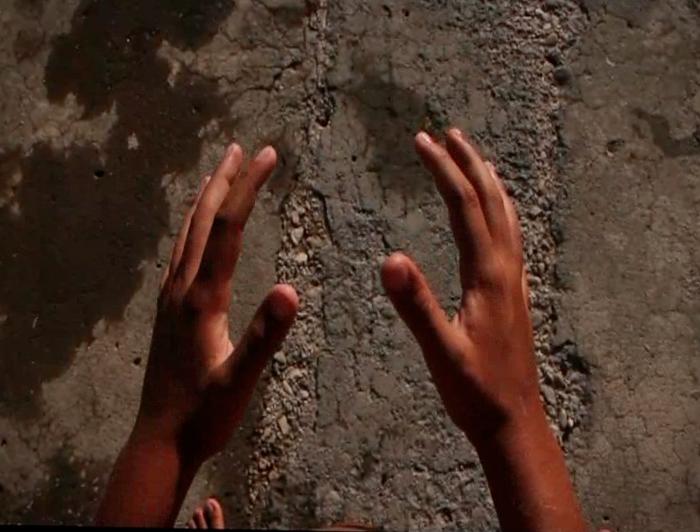Gather – Kate Genevieve and David Montgomery
Project Proposal
This work will emerge out of a conversation between interested members of the Maori community and artists, Kate Genevieve and David Montgomery, and consider how members of this community situate themselves in the second decade of the 21st Century. Kate will bring to this conversation her research into experiments devised within contemporary neuroscience to explore the neural bases of time perception. The resultant installation will explore Maori notions through technology associated with contemporary neuroscience’s explorations.
Through Gather they intend to explore marginalised traditional ways of experiencing time as opposed to the West’s clock time, using the engaged bodily experience of participants. The immersive environment seeks to manipulate participant’s experience of subjective time by using animated visuals and soundscapes that respond to the audience’s real-time heart beat in the space. Through combining bio-sensor technology with multi-sensory and haptic exploration of the botanical gardens, the intention is to destablise the body’s normal experience of time and its sense of being separate from the environment.
The film footage will incorporate patterns from the plant life of the site and, drawing upon David Montgomery’s expertise as an experimental film maker working with natural specimens, create experimental animation from the Park’s vegetation. The visuals will incorporate leaves and plants from the Botanical Gardens, and draw on local knowledge of the gardens and the different plant species from across the globe that thrive together.
Background
As Artist in Residence at the Sackler Centre for Consciousness Science at the University of Sussex, UK, Kate Genevieve has been collaborating with scientists investigating consciousness and the subjective feelings of presence and embodiment, and researching the methodologies and technologies science is using to approach subjectivity. Her work within the centre has used immersive visuals as a means of investigating presence through the bodily experience of participants, often incorporating particular experiments into narrative performances. An example of this is the interactive performance, NO PLACE, a walking meditation on presence within constructed environments that extended and pushed at the techniques of the “rubber-hand illusion”.
Recently Kate has been working with pulse-sensor technology to respond to the Centre’s work on how increased interoceptive awareness correlates with heightened feelings of presence. This work led her into a particular interest in considering how bodily experience effects temporal experience. With reference to experiments probing the neural correlates of time perception, as found in the research of neuroscientists Patrick Haggard and David Eagleman, Kate is now beginning to explore heart-beat responsive immersive environments to explore how heart beat feedback effects time perception.
The Gardens interestingly represent one instance of the blending of indigenous New Zealand culture and British culture, both in its history and its botanical life. Gather seeks to respond to this site through incorporating the plant life of the Botanical Gardens into the visual experience. Experimental film maker David Montgomery developed an animation technique using found objects, such as flowers, leaves, shells, and seed pods, while studying Digital Arts and Sciences at the University of Florida. As Artist in Residence at the Exploratorium he created animated loops from the flowers of the Pohutukawa tree and conducted initial research which he will develop through Gather into the links between particular flowers and trees and Maori folktales.
Aims
Whilst contemporary western brain science and philosophy is key to Gather, the aim of this art practice is to widen out neuroscience research from its focus on standard western experiences of time and subjectivity. Their attempt is to take neuroscience research into the world, into places not represented within science studies: outposts, islands, places and communities distant from the lab and the FMRI machine. We hope that this effort towards cross-cultural and cross-disciplinary dialogue might suggest directions for returning science, as Merleau-Ponty puts it, “to the site, the soil of the sensible and opened world such as it is in our life and for our body…”[Eye and Mind].
Gather will be installed within the Pukekura Park Bandstand, a constructed and symbolic site that represents the spread of a Victorian mode of formalising and containing nature and experience. Installing Gather within the bandstand, that curiously British ornamental construction scattered round the globe in the Victorian era, involves a serious attempt to broaden and perhaps undo a production focussed, urban, industrial understanding of time and space that the bandstand signifies.
Exhausted by identity politics that lead to fixed binaries – western/non-western, art/science, male/female, technology/nature – their working processes seek out common ground. This work is born from and results in communication and collaboration and will use digital technologies to create multi-sensory experiences that facilitate and suggest alternative (rather than new) ways of being in spaces. The exact set up of the performance must emerge out of specific meetings, conversations and exchanges between groups of people and sites during the residency.











